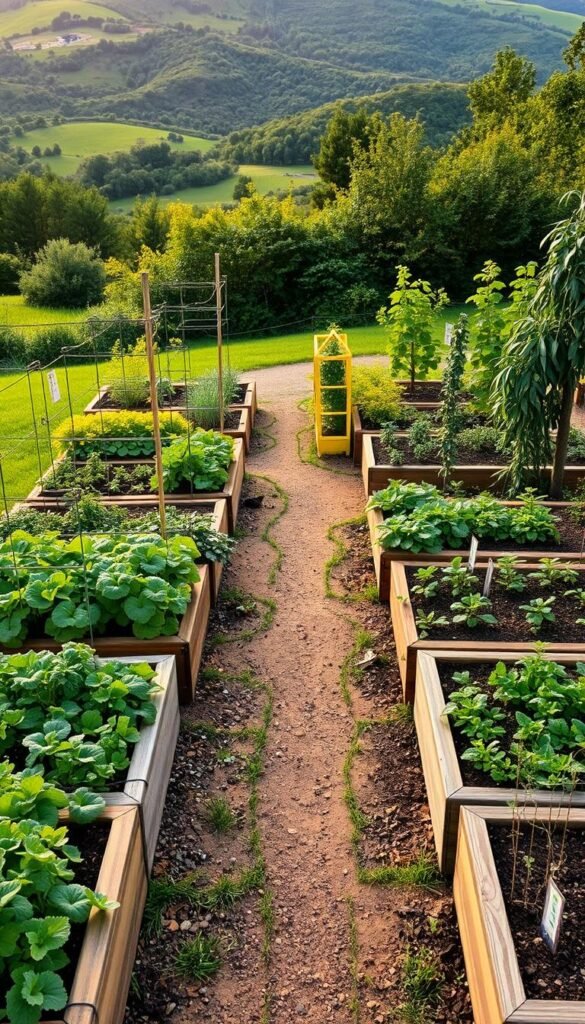Imagine growing fresh, flavorful food in a space no larger than a coffee table. That’s the magic of square foot gardening, a method designed to turn even the tiniest patio or backyard corner into a productive oasis. By dividing your growing area into a grid of one-foot squares, you’ll learn how to maximize every inch while reducing weeds and water waste.
Popularized by Mel Bartholomew, this approach relies on raised beds filled with a lightweight soil blend of vermiculite, peat moss, and compost. This mix ensures proper drainage and nutrients, giving plants a strong start. The secret? Strategic planning. Instead of traditional rows, you’ll arrange crops based on their spacing needs—like 16 carrots per square or one tomato plant per grid section.
Whether you’re new to gardening or refining your skills, this guide will walk you through selecting crops that thrive in compact setups. We’ll cover how to balance leafy greens, root vegetables, and climbing plants to create a lush, efficient garden. You’ll also discover tips for timing plantings and extending your harvest season.
Ready to transform limited space into abundance? Let’s dig into the essentials of designing a high-yield garden that works as hard as you do.
Discovering the Benefits of Square Foot Gardening
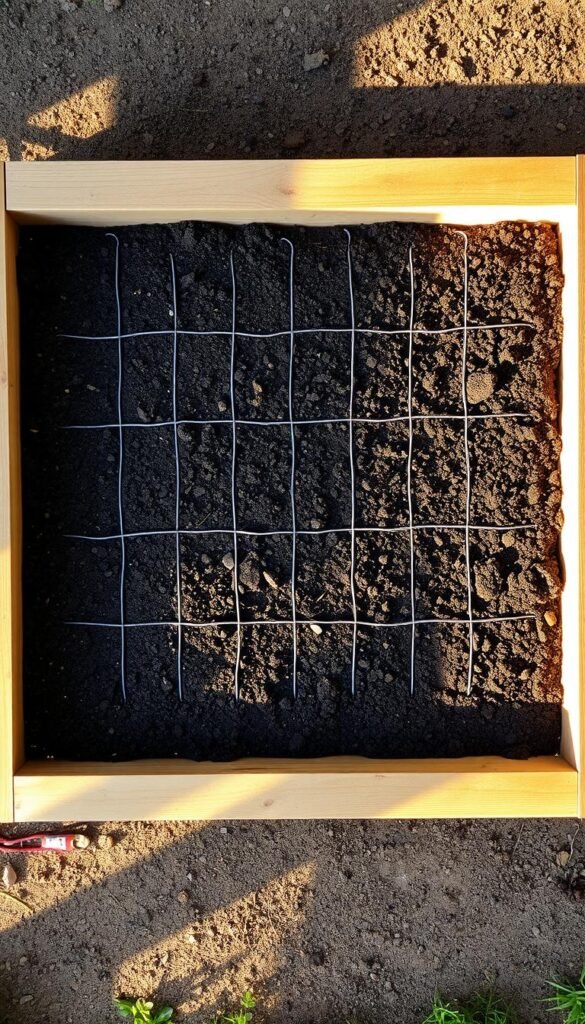
Ever wondered how to grow more food with less effort? This method turns cramped areas into lush gardens by focusing on smart design rather than endless labor. Let’s explore why this system shines for urban dwellers and time-strapped growers.
Why It Works for Tight Spaces
Traditional gardens waste space with walkways between rows. Square foot gardening eliminates this by packing plants into a grid. You’ll place 16 carrots or 9 spinach plants in one square instead of stretching them across bare soil. This dense planting shades the ground, reducing weeds and conserving moisture.
Raised beds filled with fluffy soil mix prevent compaction. Your plants’ roots breathe easily, absorbing nutrients without fighting hard earth. Check seed packets for spacing tips—they’ll tell you exactly how many to plant per square.
The Science of Small-Scale Abundance
The “1-4-9-16 rule” isn’t random—it’s based on plant size and root spread. Large crops like broccoli need 1 square foot, while radishes thrive at 16 per section. This precision ensures each plant gets enough light and water without competition.
Try marking grids with string or wooden slats. Visual boundaries help you organize companion plants and track growth. You’ll harvest 4x more from the same space compared to traditional methods!
Planning Your Garden and Setting Up the Perfect Layout
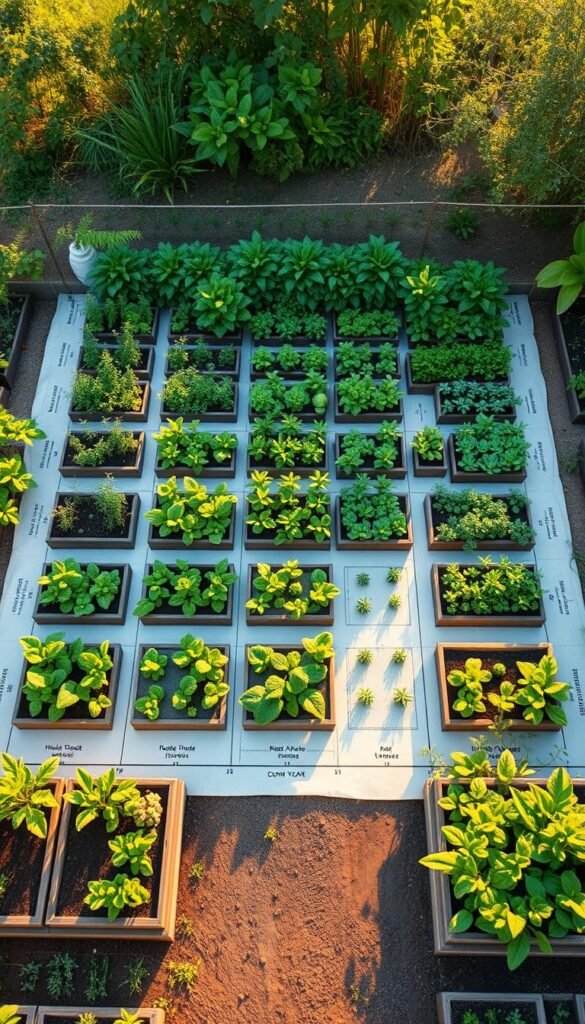
Where you place your garden bed determines how well your plants grow. Start by tracking sunlight patterns—most vegetables need 6-8 hours daily. Look for flat ground or build a raised bed to avoid water pooling. Keep pathways clear so you can reach every square without stepping on soil.
Choosing the Ideal Location and Garden Bed Size
A 4’x4’ box is ideal for most gardeners. This size lets you access all plants from the sides. For smaller spaces, try stacking planters or using vertical frames. Mark your grid with string dividers or wooden strips to maintain neat squares.
Mel Bartholomew’s soil mix—equal parts peat moss, vermiculite, and compost—creates fluffy, nutrient-rich beds. Avoid heavy clay or sandy soils. Test drainage by watering a small area: if puddles form after 15 minutes, amend the soil.
Building or Purchasing Raised Garden Boxes
DIY boxes save money and let you customize sizes. Use untreated cedar or redwood for durability. Pre-made kits from brands like Better Homes & Gardens offer quick setup. Compare options using this table:
| Feature | DIY Boxes | Pre-Made Kits |
|---|---|---|
| Cost | $25-$50 | $80-$150 |
| Customization | Exact dimensions | Standard sizes |
| Assembly Time | 2-4 hours | 20 minutes |
Sketch your layout on graph paper or use free online planners. Assign crops to squares based on spacing needs—like 1 tomato per square or 16 radishes. Rotate plants each season to keep soil healthy.
7 High-Yield Crops for Your Square Foot Garden Plans
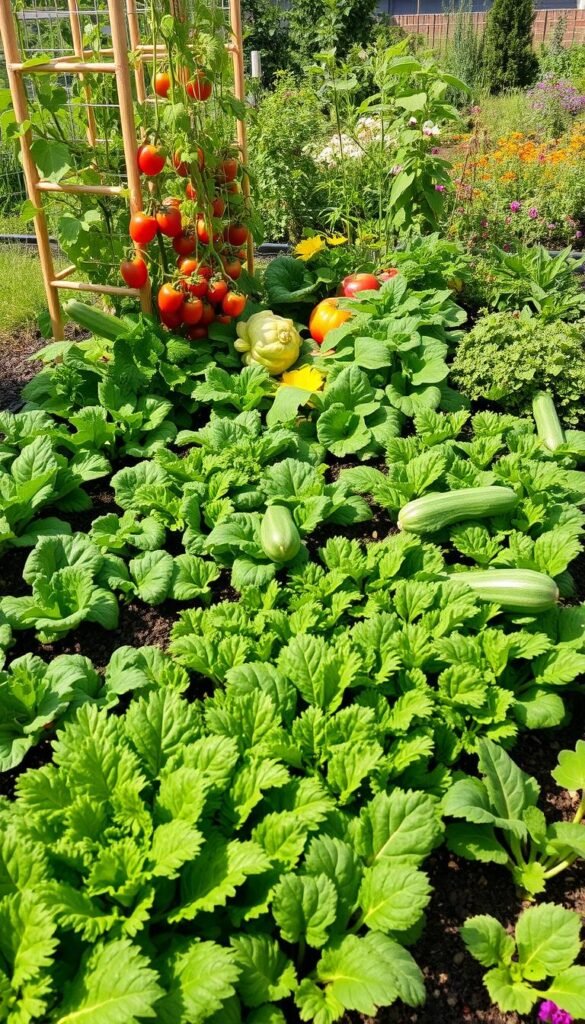
Want to pack more veggies into less space? Let’s explore top performers for compact gardens. The key lies in pairing smart spacing with plants that deliver big flavors and harvests. Follow the 1-4-9-16 rule to organize your grid: one extra-large plant, four large, nine medium, or sixteen small plants per square.
Identifying Crops That Maximize Your Harvest
Tomatoes and peppers shine as high-output choices, yielding 8-10 lbs per plant in just one square. Broccoli thrives with 1 plant per section, while leafy greens like spinach fit nine per square. Use this table to plan efficiently:
| Plant Type | Quantity Per Square | Yield Per Season |
|---|---|---|
| Cherry Tomatoes | 1 | 10-12 lbs |
| Bell Peppers | 1 | 6-8 peppers |
| Bush Beans | 9 | 4 cups |
| Radishes | 16 | 20-25 roots |
Companion Planting and Crop Rotation Techniques
Pair basil with tomatoes to repel aphids, or grow marigolds near peppers to deter beetles. Rotate crops yearly—swap heavy feeders like broccoli with light feeders like onions. This prevents soil fatigue and disease buildup. For layout ideas, check our guide on designing the perfect square foot gardening.
Vertical climbers like peas save space when trained on trellises. Mix fast-growing lettuce with slower cabbage varieties to harvest continuously. Your garden grid becomes a living puzzle where every piece boosts productivity!
Optimizing Plant Spacing and Garden Efficiency
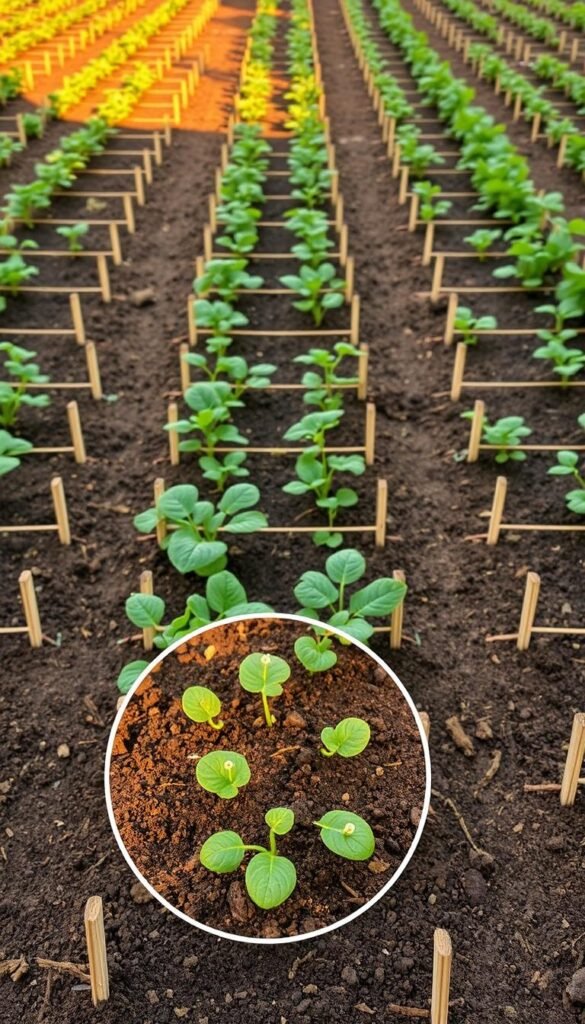
Did you know overcrowded plants compete for nutrients and light, cutting harvests by 30%? Smart spacing solves this. Start by dividing your grid into squares using string or wooden markers. Each section becomes a mini ecosystem where roots thrive without tangling.
Understanding Plant Spacing Guidelines
Follow the 3-inch rule for small veggies: radishes and carrots need 16 per square. Medium plants like spinach fit nine per section. For chives or onions, space them 4 inches apart. Use this quick-reference table:
| Plant | Spacing | Quantity/Square |
|---|---|---|
| Radishes | 3 inches | 16 |
| Lettuce | 6 inches | 4 |
| Swiss Chard | 8 inches | 1 |
| Cucumbers | 12 inches | 1 (vertical) |
Taller plants go on your garden bed’s north side. This stops them from shading shorter herbs and greens. Check soil moisture daily—crowded roots dry out faster.
Integrating Trellises and Vertical Gardening
Train peas and beans upward using bamboo stakes or wire grids. A 6-foot trellis lets you grow 8 cucumber plants in one square’s footprint. Vertical frames save space while improving airflow, reducing mold risks.
Pair climbing veggies with low-growing companions. Try lettuce under pole beans—the greens stay cool while beans soak up sun. Use drip irrigation lines along trellises to water roots directly, cutting waste by 40%.
Raised beds make spacing easier since fluffy soil lets roots spread. Refresh compost each spring to maintain nutrients. With smart layouts, you’ll spend less time weeding and more time harvesting!
Wrapping Up Your Garden Journey and Next Steps
Now that you’ve built your productive grid, keep refining it. Review your layout monthly—adjust spacing if radishes crowd carrots or peppers need more sun. Those tidy squares work best when you tweak them as plants grow.
Remember your tools: vertical trellises for peas, companion pairings like onions with herbs, and seasonal maintenance routines. Connect with local master gardeners for soil tips or pest fixes. They’ll help you troubleshoot issues like yellowing leaves or slow-growing veggies.
When spring returns, rotate crops. Swap heavy feeders like broccoli with light-rooted beets to keep soil vibrant. Use printable planners to map succession planting—every square stays busy from frost to frost.
Your square foot garden thrives on curiosity. Try new plant combos, track yields, and celebrate each crunchy radish. With smart spacing and playful experiments, you’ll turn that compact grid into endless meals.

